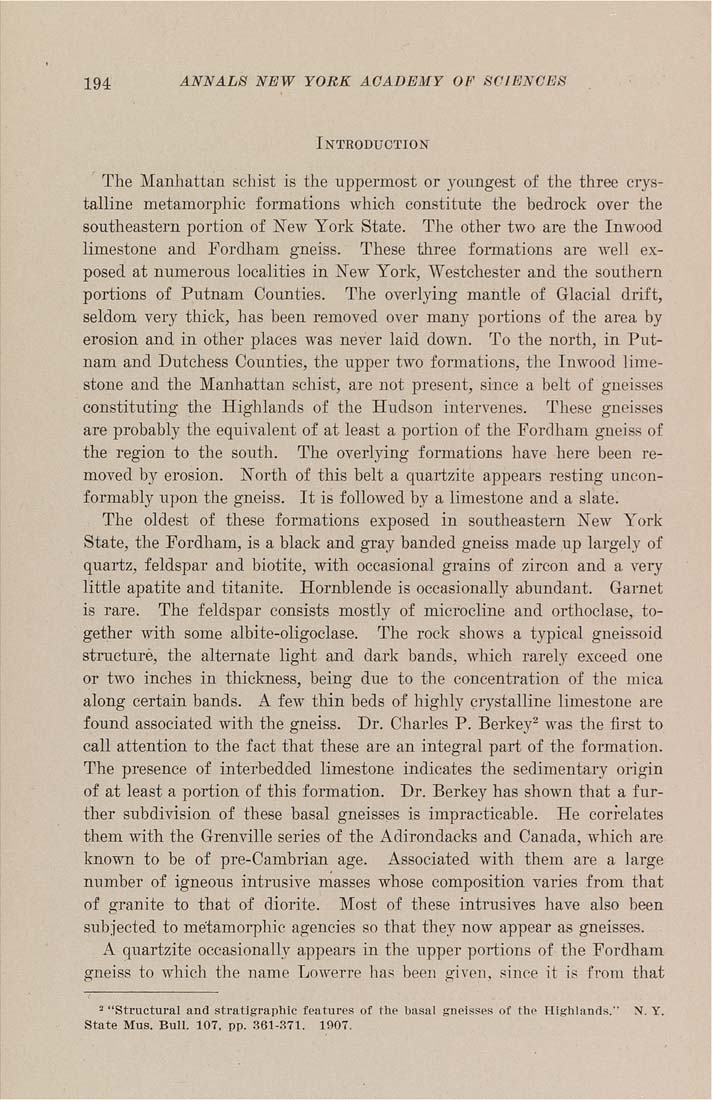194 ANNALS NEW YORK ACADEMY OF SCJENOES
Introduction
The Manhattan schist is the uppermost or youngest of the three crys¬
talline metamorphic formations which constitute the bedrock over the
southeastern portion of New York State. The other two are the Inwood
limestone and l^'ordham gneiss. These iJiree fonnations are well ex¬
posed at numerous localities in New York, Westchester and the southern
portions of Putnam Counties. The overlying mantle of Glacial drift,
seldom very thick, has been removed over many portions of the area by
erosion and in other places was never laid down. To the north, in Put¬
nam and Dutchess Counties, the upper two formations, the Inwood lime¬
stone and the Manhattan schist, are not present, since a belt of gneisses
constituting the Highlands of the Hudson intervenes. These gneisses
are probably the equivalent of at least a portion of the Fordham gneiss of
the region to the south. The overlying formations have here been re¬
moved by erosion. North of this belt a quartzite appears resting uncon-
formably upon the gneiss. It is followed by a limestone and a slate.
The oldest of these formations exposed in southeastern New York
State, the Fordham, is a black and gray banded gneiss made up largely of
quartz, feldspar and biotite, with occasional grains of zircon and a very-
little apatite and titanite. Hornblende is occasionally abundant. Garnet
is rare. The feldspar consists mostly of mici"oeline and orthoclase, to¬
gether with some albite-oligoclase. The rock shows a typical gneissoid
structure, the alternate light and dark bands, which rarely exceed one
or two inches in thickness, being due to the concentration of the mica
along certain bands. A few thin beds of highly crystalline limestone are
found associated with the gneiss. Dr. Charles P. Berkey^ was the tirst to
call attention to the fact that these are an integral part of the formation.
The presence of interbedded limestone indicates the sedimentary origin
of at least a portion of this formation. Dr. Berkey has shown that a fur¬
ther subdivision of these basal gneisses is impracticable. He correlates
them with the Grenville series of the Adirondaeks and Canada, which are
known to be of pre-Cambrian age. Associated with them are a large
number of igneous intrusive masses whose composition varies from that
of granite to that of diorite. Most of these intrusives have also been
subjected to metamorphic agencies so that they now appear as gneisses.
A quartzite occasionally appears in the upper portions of the Fordham
gneiss to which the name Lowerre has been given, since it is fi'oin that
" "Structural and straf igraphic features of the basal gneisses of the Highlands." N. Y.
State Mus. BuU. 107. pp. .^61-^71. 1007.
|








